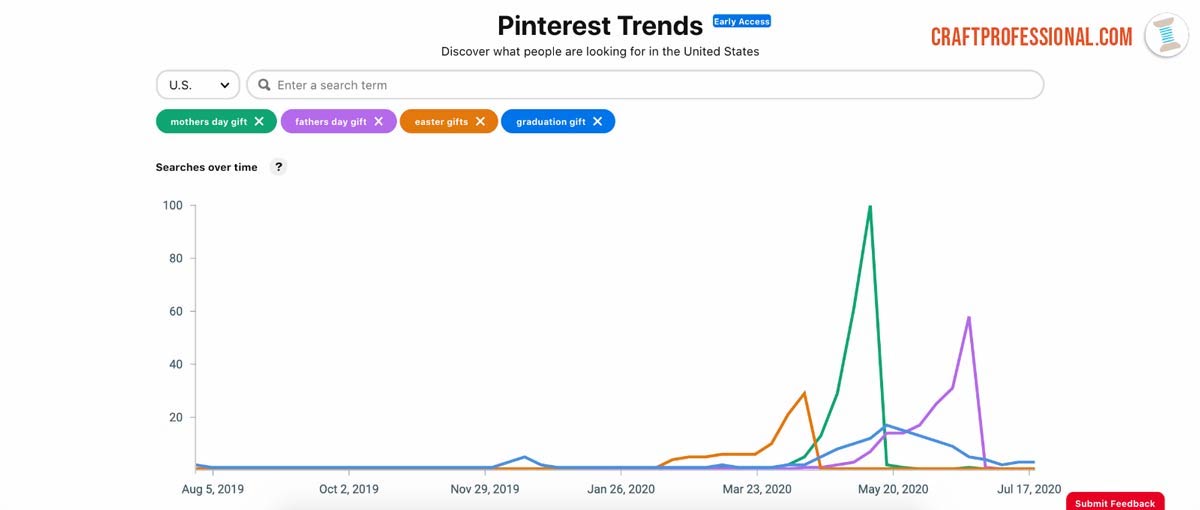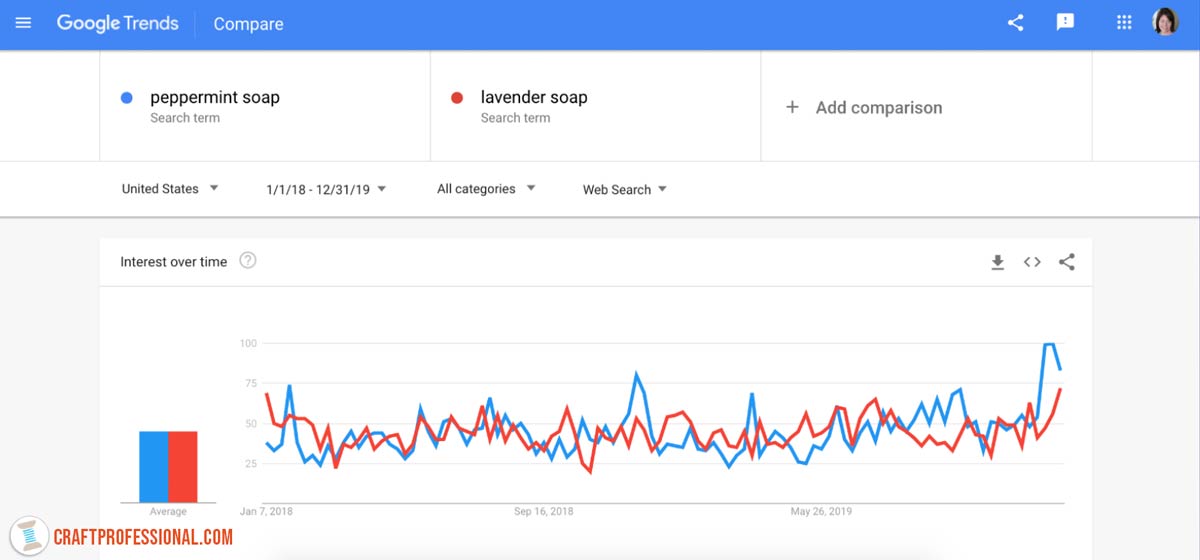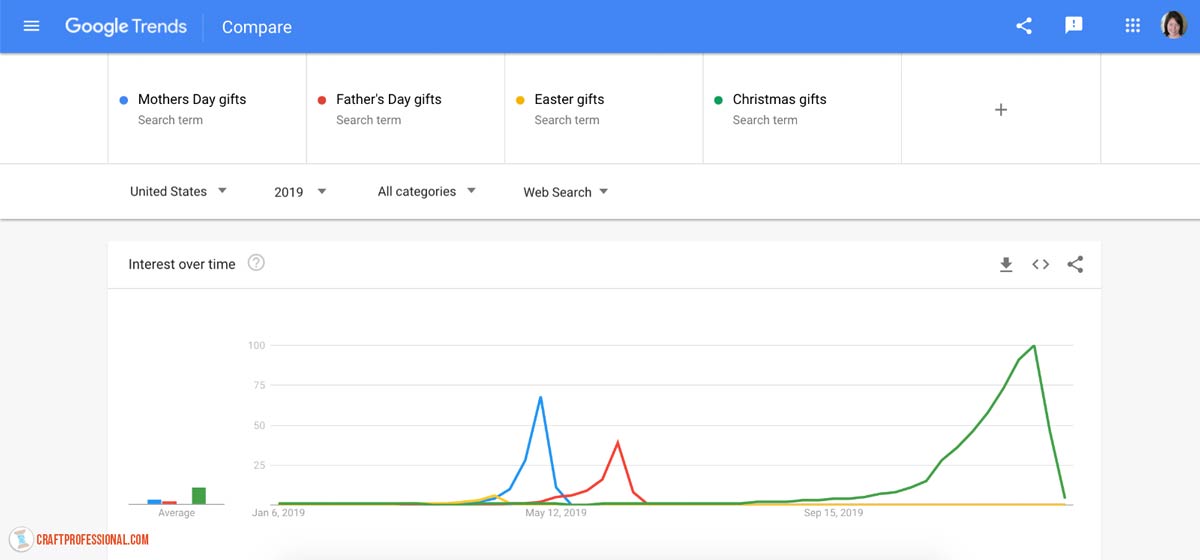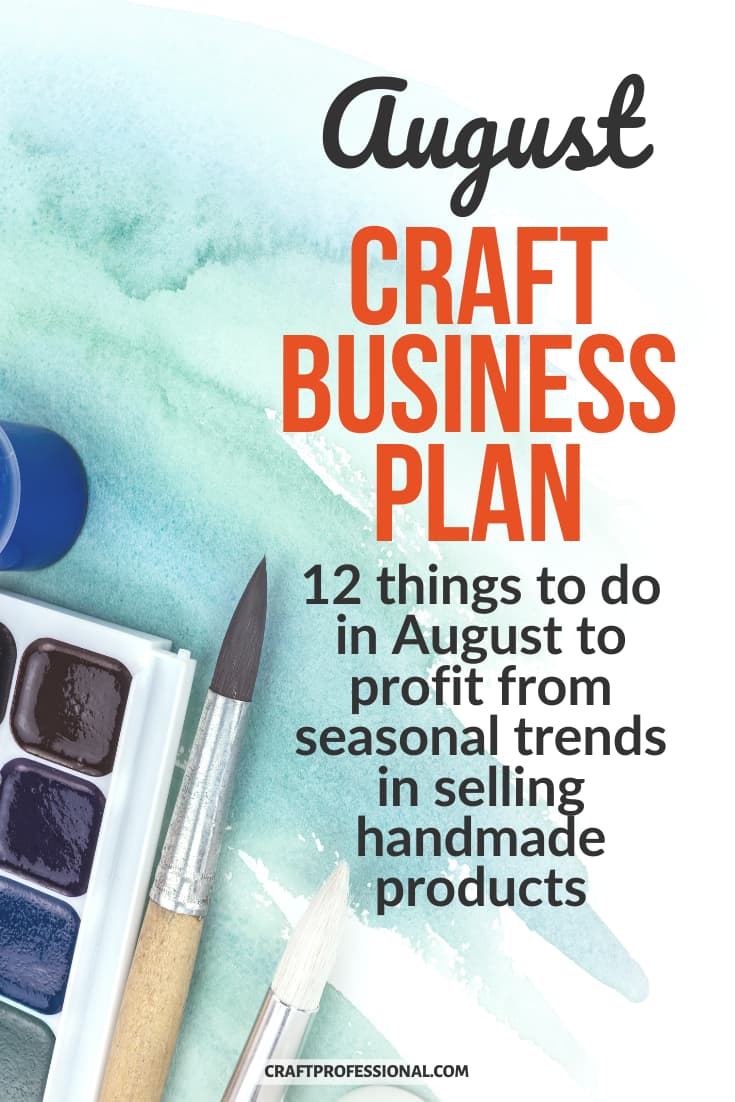Craft Artist Business Plan
Learn which projects are most important to grow your craft business throughout the year, so you can plan your work strategically and avoid missing important opportunities.
The craft artist business plan I've created for August will let you see your business opportunities across a full year. It's designed to help you manage the seasonal nature of your business, so you can get organized, keep track of important deadlines, and be prepared to grab opportunities as they arise.
Craft businesses are typically quite seasonal - both in terms of what you sell and where you sell.
Your customers may be looking to buy very different things in July vs. December. There are also time-sensitive tasks and expenses, like applying to art shows and paying booth fees, that can sneak up on you if you're not organized with a good craft artist's business plan in place.
That's why, this month, I've provided a set of action steps to help you create a year-long overview of your seasonal craft business tasks so you can:
- understand what customers are looking for throughout the year, so you're ready with what shoppers want when they want it
- be aware of deadlines and annual costs, so you're not met with unpleasant surprises and don't miss important closing dates
- create quarterly business goals and areas of focus based on the seasonality of your business
Your Craft Artist Business Plan
Here's what we'll look at to help you create a year-long craft artist business plan that allows you to see the seasonal nature of your business.
- Research seasonal trends in your niche - So you know what customers are looking for throughout the year.
- Review holidays relevant to your business - So you know when they happen, when customers are shopping, and when you need to prepare.
- Get control of your time-sensitive business tasks - So you never miss a deadline and can avoid unpleasant surprises.
- Set quarterly goals - So you can focus on the right tasks at the right time.
1. Research Seasonal Trends in Your Niche
Whether you have an online craft business or you sell your handmade items at more traditional venues like craft shows, some simple online research can give you an idea of what's on your customers' minds at different times of the year.
We'll look at two free online tools that show you what people are searching for over time. These tools can give you a better understanding of what customers are looking for throughout the year, so you can be ready to meet their needs.
Get Down to Business:
1. Brainstorm seasonal topics that are relevant to your business.
Think about seasonal topics that are relevant to your business. These topics will be the keywords that form the starting point for your search trends research.
For example:
If your products are seasonal in nature, it will be helpful to know when people start searching for specific types of products. For instance, if you knit cozy winter hats for winter, and you sew stylish sun hats for summer, it will be helpful to know when customers are searching for each item.
Make a list of those topics, which you'll use to start your search trends research. There's no need to make an exhaustive list. As you do your research, the trends tools you use will suggest more keywords of interest.
2. Search Pinterest Trends.
Pinterest has released a helpful tool that shows you what people are searching for over time and gives you a rough idea of how popular a topic is on Pinterest relative to other topics.
If you want to know when people start searching for Christmas gift ideas or whether Mother's Day is more popular than Easter, the Pinterest Trends tool will help.
Unfortunately, you can't download your research results from Pinterest Trends, so you'll need to keep notes on any results that are interesting and worth following up.
When I use Pinterest Trends for my own research, I just take screen shots of the results as I work through my list of topics to research. It's a quick way to save the information and the graphs, so I can go back and assess everything I've discovered.
 Pinterest Trends shows data on helpful graphs, but you can't download the data. If you screenshot these graphs as you're researching, you can easily go back and review everything.
Pinterest Trends shows data on helpful graphs, but you can't download the data. If you screenshot these graphs as you're researching, you can easily go back and review everything.If you'd like some guidance, I've written a detailed description of how to use the Pinterest Trends tool to help you get the most out of this helpful resource.
Here's where you can check out the Pinterest Trends tool.
3. Search Google Trends.
Google also offers a free tool you can use to track search trends over time. This tool has more data than the Pinterest Trends tool, so you can drill down to more specific topics.
Simply type in any term that's relevant to your business, and you can see people's relative degree of interest over the course of a year or longer.
You can download your research results with Google Trends, but if you like seeing everything displayed visually on a graph, you might want to screenshot this research as well.
As you did with Pinterest Trends, look for and make note of any seasonal trends that may present business opportunities and make note of those possibilities.
You'll find Google Trends here.
I haven't written detailed instructions for using Google Trends because you can find excellent information about how to use Google Trends on the Mediavine blog.
Google Trends vs. Pinterest Trends
There are a lot of similarities between the two online search trends research tools, but Google Trends has more data and functionality than Pinterest Trends.
With Google Trends you can:
- Search more keywords than you'll find on Pinterest Trends.
- Check search trends all the way back to 2004 - A helpful feature if you want to know if something is a long-term trend recurring trend or a one-time passing fad.
- Drill down to check search trends in more geographically-specific locations.
Why bother using Pinterest Trends if Google Trends has more information?
Remember, Google Trends shows data about what people are searching for on Google. Pinterest Trends shows what people are searching for on Pinterest. While there's some overlap, there are also distinct differences in how people use each search engine.
Crafts, fashion, decor, design, and lifestyle topics are extremely popular topics on Pinterest. Those topics are typically important to niches related to craft businesses. That's why I like to check Pinterest Trends as well as Google Trends.
4. Review your research and note any important findings.
Once you've researched your niche using Pinterest Trends and Google Trends, step back and take a look at everything you've discovered. Make note of anything interesting and anything you may want to act on. Be sure to note approximate dates when topics surge in popularity throughout the year.
You may have found information about:
- When people start searching for items or events that are important to your business - so you'll know when you need to start working on and promoting those items.
- Unexpected popular products that are relevant to your business - perhaps you've discovered a promising new opportunity.
- Products or promotions you've planned that aren't as popular as you had assumed - it might be wise to reassess your plans.
2. Review Holidays Relevant to Your Business
Handmade items are popular for gift-giving, and holiday shopping can be pretty important to craft sales, but you need to plan ahead.
It can be surprising just how far in advance you need to prepare your business for holiday shopping seasons.
Who's up for Christmas in July?
If you take some time to work out when customers are doing holiday-related shopping and when you need to prepare for holidays, those dates won't sneak up and catch you unprepared.
Get Down to Business:
5. List any holidays or seasons that are relevant to your business.
Make note of any popular holidays and seasonal events that you know are important or relevant to your business. List the dates when each event occurs.
6. Learn when people start searching for holiday-related items.
If you didn't already search holiday-related terms, go back to Pinterest Trends and Google Trends (steps 2 and 3) and search for the holidays you just noted in step 5.
You can check and compare fairly broad holiday-related searches like "Christmas gift" and "graduation gift" to see the relative popularity and when people start searching for those holidays.
You can also try more product-specific searches. Look for increased interest in any of your products that coincides with popular gift-giving times.
For instance, Google Trends shows us that over the course of a year, interest in "peppermint soap" and "lavender soap" is about equal. But interest in "peppermint soap" increases significantly in December - just in time for Christmas shopping.
 Google Trends search comparing "peppermint soap" and "lavender soap." Two equal bars on the left show the keywords are equally popular over the full year. But the graph shows searches for "peppermint soap" (the blue line) increase in December.
Google Trends search comparing "peppermint soap" and "lavender soap." Two equal bars on the left show the keywords are equally popular over the full year. But the graph shows searches for "peppermint soap" (the blue line) increase in December.7. Look for other holidays that could be important to your business.
While you're exploring holidays, see if there are any additional holidays or seasonal events that you don't currently focus on but might present good opportunities for your business.
Do some research and see if there is any strong seasonal demand for items related to your business that you don't currently address.
I'll use the broad term "gifts" in my example, but you can inspect more product and niche-specific searches as well.
If you were looking at running a gift-giving promotion for the spring, you could compare relative search volume for Mother's Day gifts, Father's Day gifts, and Easter gifts.
You could throw Christmas gifts into the mix as well. Since you know Christmas is the ultimate gift-giving and shopping season, comparing other holidays to Christmas will give you a general idea of the relative popularity of those holidays.
That particular search on Google Trends shows you that Mother's Day gift-giving is more popular than Father's Day and Easter. If you could only focus on one spring event - all other things being equal - Mother's Day would be the way to go.
 Google Trends graph comparing the popularity of 4 holiday gift-related searches. "Mother's Day gifts" (in blue) is more popular than Father's Day gifts (red) and Easter gifts (yellow). "Christmas gifts" (in green) is the most popular.
Google Trends graph comparing the popularity of 4 holiday gift-related searches. "Mother's Day gifts" (in blue) is more popular than Father's Day gifts (red) and Easter gifts (yellow). "Christmas gifts" (in green) is the most popular.You can also see on the chart that people start hunting for Mother's Day gift ideas around early April. They are searching Google for Christmas gifts as early as September.
That information can help you time your preparation and any promotion you might do.
3. Get Control of Your Time-Sensitive Business Tasks
There are a lot of time-sensitive tasks to manage when you start a craft business, particularly if you sell at craft shows or participate in art studio tours. It's worth spending some time making note of all of those time-sensitive tasks that come up once a year, so you never miss a deadline and avoid unpleasant surprises.
Get Down to Business:
8. Note any time-sensitive projects you want to complete.
Based on the trends research you just completed, you may have discovered some time-sensitive projects you want to commit to. For instance, you may decide you want to start working on your Christmas shopping promotions in August. Or you may have discovered a new opportunity that you want to explore and develop in time for next summer.
Time has a way of flying by, and it's easy for all of those projects to sneak up on you if you don't schedule them into your calendar. Make a list with target start and end dates, and you'll be in a better position to meet seasonal goals.
9. Make a list of business tasks that are time-sensitive.
In addition to bigger projects you want to complete, you probably have some smaller but important tasks that come up once a year such as:
- Completing juried art show applications
- Applying to open art studio tours
- Preparing income tax returns
- Reviewing important subscriptions and services which renew annually like business insurance or website hosting
Make a list of all of the time-sensitive tasks you encounter over the course of the year, so you can avoid missing important deadlines.
Managing your Craft Show Applications
Applying to craft shows and studio tours is a project in its own right, particularly if your craft business is new. There will be several dates to track for each show you apply to.
If you'd like some extra guidance, you can find a detailed action plan for applying for juried art shows in January's craft business action plan.
10. List big annual expenses.
Annual fees for business-related products and services can also sneak up on you and create unpleasant surprises in your bank account.
Make a list of due dates and amounts for any recurring annual expenses that are large enough to put a dent in your business bank account such as:
- renewals for annual subscriptions
- craft show booth fees
- large purchases of raw materials
If your business isn't new, you can review your finances from the previous year to look for these types of expenses.
If your business is new, you'll need to project ahead and think through all of your possible big expenses. It can be tougher to predict upcoming expenses for a brand new business, but having an outline that's as accurate as possible is better than having no expenses summary at all.
Note your large projected expenses in a calendar or in the software or spreadsheet you use to track your business expenses. You may want to set a reminder alert ahead of the expense due date. Just make sure the expenses are recorded in a way that you'll notice them before they are due, so you're not surprised by any unexpected business expenses.
4. Set Quarterly Goals
Now that you have a better sense of the tasks and projects that will be important throughout the year, it's time to make some decisions about the projects you'll prioritize and when you'll work on each project.
I like setting quarterly goals because that gives you 4 blocks of 13 weeks to work on big projects each year. I find 13 weeks is long enough to accomplish something substantial, but short enough that the project doesn't drag on.
Get down to business:
11. Make sure your plans are realistic.
You've made lists of major projects and seasonal tasks you want to complete, but before you commit, you need to make sure your plans are reasonable.
Smart business goals are realistic. You need to ensure you can complete your projects with the time and resources you have available, otherwise, you're just setting yourself up for failure.
Look at what you want to accomplish and where things fall throughout the year. Ask yourself honestly whether the goals on your list are reasonable.
If your list of projects isn't realistic, you'll need to make some tough decisions and choose your top priority projects. When I have too much going on in my life and my business, I try to keep my big-picture goals in mind and choose to keep projects that are most in-line with those goals.
12. Commit to quarterly goals.
You've reviewed your planned projects for the year, selected the ones you feel will have the best impact on your business, and ensured your plans are realistic. Now it's time to commit.
Make a final list of the seasonal projects you're going to work on over the upcoming year. Note start dates and end dates and any important resources you'll need to put in place to complete the project.
Keep that list somewhere where you'll see it on a regular basis. Seeing your big-picture business plans can help keep you focused so you avoid getting lost in the day-to-day details of running your business.



New! Comments
Have your say about what you just read! Leave me a comment in the box below.